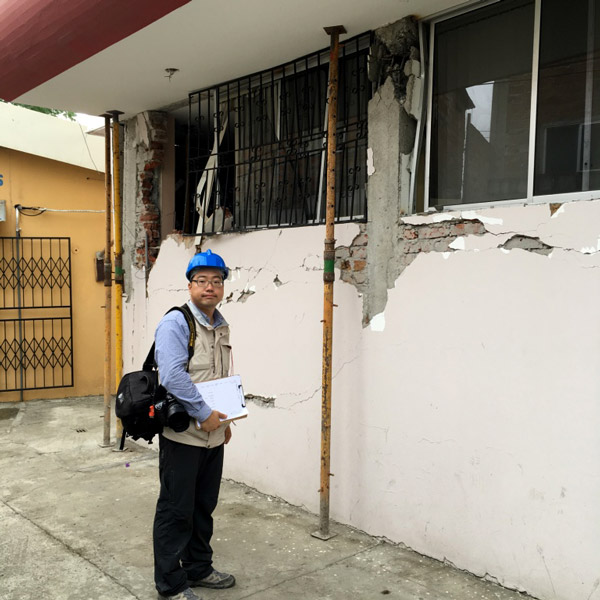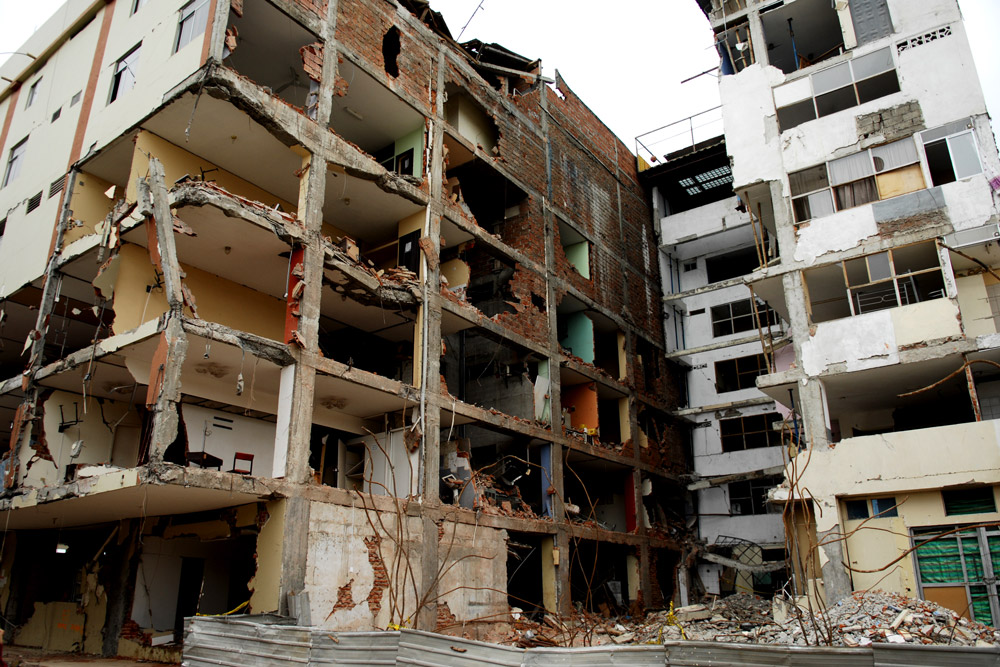Calendar Icon
Sep 22, 2016
Person Bust Icon
By Keith McGuffey
![]() RSS
Submit a Story
RSS
Submit a Story
Chungwook Sim, assistant professor of civil engineering at UNL, recently led a team of researchers to assess damage from the earthquake that shook Ecuador on April 16, 2016 with a moment magnitude of 7.8. The earthquake caused more than 660 casualties and over 27,730 people were injured. The team was formed by the American Concrete Institute’s Committee 133 – Disaster Reconnaissance, which strives to produce detailed surveys and inspections of reinforced concrete structures affected by earthquakes.
The team consisted of researchers and engineers from University of Nebraska-Lincoln, Seattle University, and Walter P Moore with faculty and undergraduate students of Escuela Superior Politécnica del Litoral (ESPOL). They surveyed low-rise reinforced concrete buildings – buildings less than seven stories tall – and collected GPS coordinates, hand sketches of floor plans, dimensions of structural and non-structural elements, damage level, photographs, and structural and/or architectural drawings (if available). They worked long days gathering data on damaged buildings. The data collected are accessible at http://datacenterhub.org/resources/14160.
The research team surveyed over 170 buildings during their ten days in Ecuador. In addition to assessing the damage caused by the earthquake, Sim is attempting to evaluate a simple vulnerability index which can be used in rapidly assessing the seismic performance of large building inventories.
Sim’s team also focused heavily on schools. According to Sim, there is not a wealth of quantitative data on school structures damaged by earthquakes. These structures are more likely to have short captive columns, columns that have adjoining unreinforced masonry walls with openings at the upper part.
“Columns should be able to deform laterally during earthquakes,” said Sim. “For a captive column, the adjoining masonry wall restricts the free movement of the column. This situation introduces large shear stresses at the top of the column where openings are present. A lot of schools have these types of walls with windows at top, because it allows natural light and ventilation into the classroom, but it’s not structurally ideal during an earthquake. It causes a lot of damage to the columns.”
Sim hopes his team’s work will be used by other researchers to study the performance of concrete structures under earthquake loads. The results of the survey, including all photographs taken and diagrams produced, has been published on datacenterhub.org, a cyber-platform for preserving and sharing large sets of engineering and science data. This platform was created and developed under the National Science Foundation CIF 21 DIBBs program and Sim is a co-investigator in this project.
While surveying the damage of the earthquake, Sim also experienced his first earthquake.
“At first, I didn’t know what was going on,” said Sim. “I was on the fifth floor of the hotel and the building started shaking. It was one of the four aftershocks we experienced during our stay in Ecuador.”
Sim plans to publish a paper that discuss their survey efforts in an upcoming issue of Earthquake Spectra. For more information on the survey team’s findings, please see their dataset published on datacenterhub.org/resources/14160.
Submit a Story

